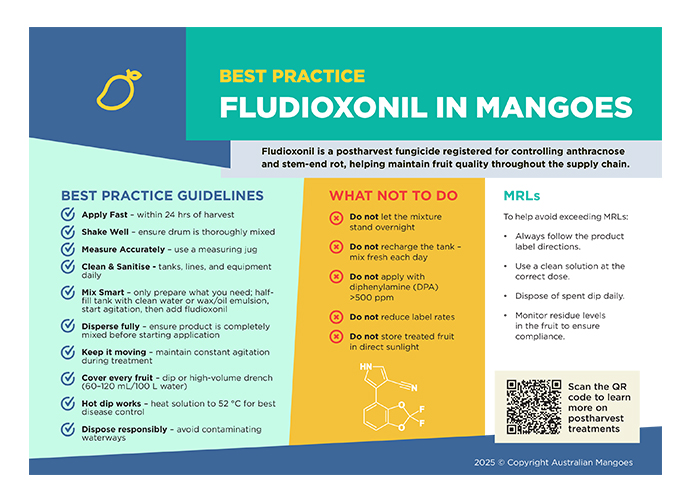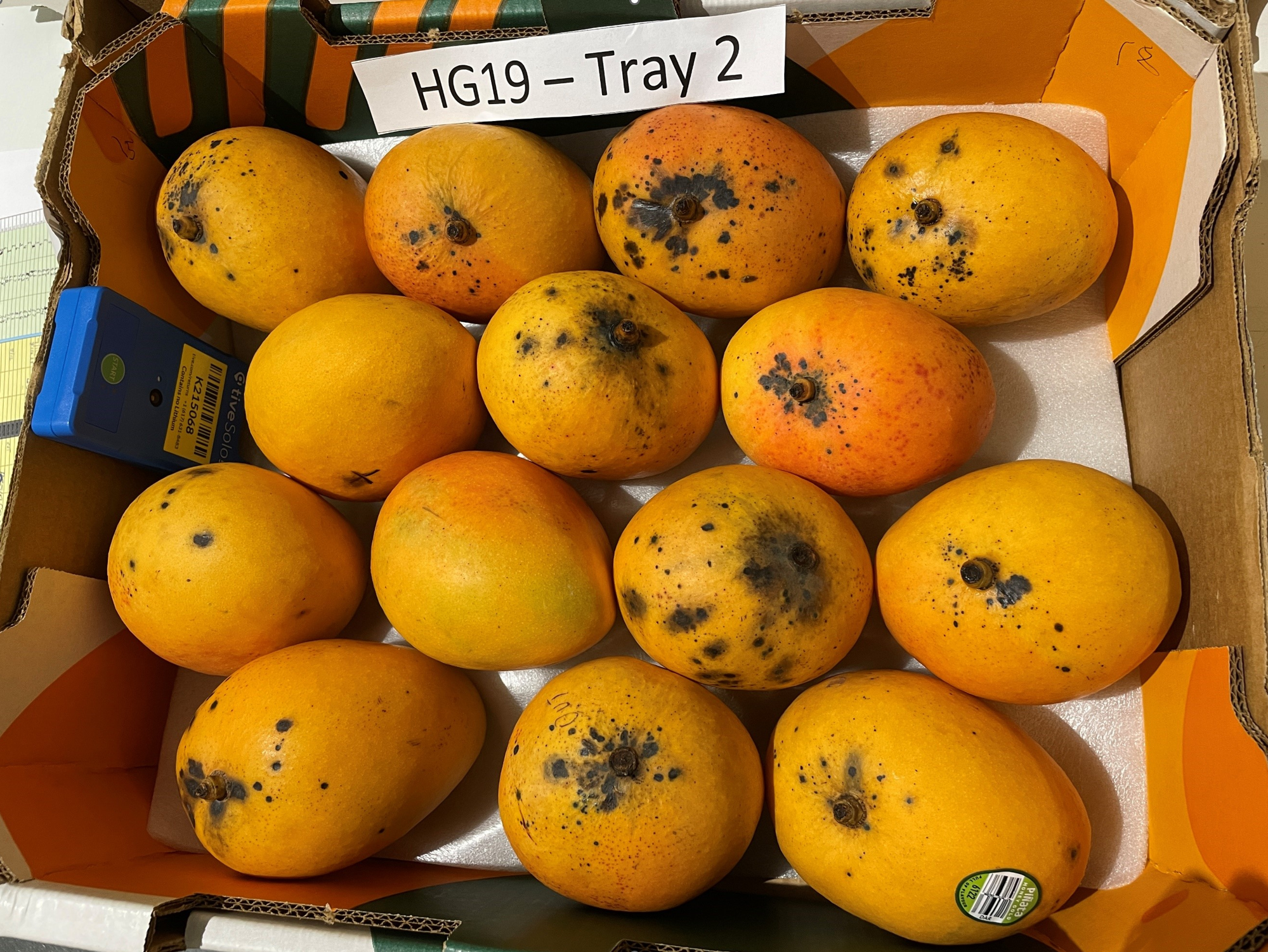Postharvest Treatments
Control of anthracnose and stem end rot
Applying a postharvest fungicide treatment can significantly reduce the expression of rots once the fruit begins to ripen at retail level.
Both anthracnose and stem end rot are major causes of fruit rot and prevalent in the Australian crop. Infection usually occurs in the field however symptoms only develop once the fruit ripens. As a result, it can go undetected along the supply chain until it reaches the end consumer.
Postharvest treatment is not a substitute for field spraying. Effective mango disease management requires an integrated approach. Good orchard hygiene, timely fungicide applications, and postharvest treatment all play a role in maintaining fruit quality.
Postharvest fungicides registered for use in mangoes 
Fludioxonil and Prochloraz are the two postharvest fungicides registered for use in mangoes to help manage anthracnose and stem end rot. They are most effective when used preventatively and as part of an integrated disease management program. Always follow label instructions for application rates to maximise efficacy and maintain fruit quality. Click the button below to learn more on agrichemicals for use in mangoes.
The poster for Fludioxonil in Mangoes outlines best practice guidelines for using Fludioxonil in mangoes, helping growers maintain fruit quality and comply with residue limits throughout the supply chain.
Agrichemicals for use in mangoes
Exporting Treated Mangoes
If you are exporting, note that suitable MRLs or import tolerances for produce treated with fludioxonil or prochloraz may not be established in all markets. Before use, always check the current MRLs for your target export destinations and confirm the latest requirements with the product manufacturer. More information on current MRLs is available through the Mango MRL App.
